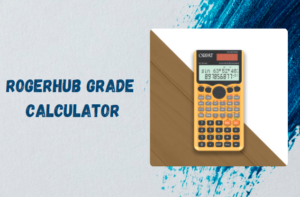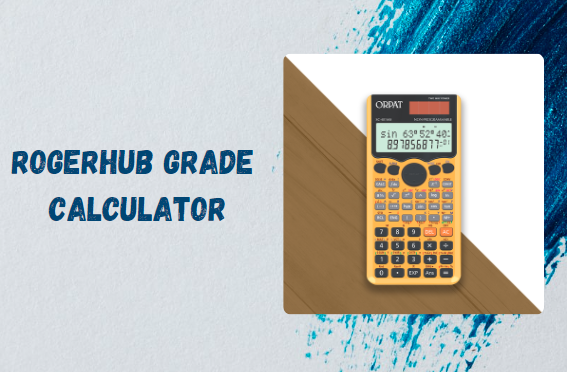In the world of economics, the Gross Domestic Product (GDP) is often hailed as the ultimate measure of a nation’s economic performance. However, much like a movie with deleted scenes that change the narrative, the traditional calculation of GDP omits critical aspects of economic well-being.
“GDP – Deleted Scene – E355” invites us to look beyond the surface and appreciate the broader context of economic performance. By acknowledging the unseen chapters in economic storytelling, we can foster a more comprehensive understanding of what truly drives prosperity and well-being.
The Traditional GDP: A Snapshot
Understanding GDP
Gross Domestic Product, or GDP, is the total monetary value of all goods and services produced within a country’s borders over a specific period. It is commonly used to gauge the health of an economy, with higher GDP indicating better economic performance. However, this measure has its limitations.
The Limitations of GDP
While GDP provides a quantitative measure of economic activity, it fails to account for several qualitative factors that contribute to a nation’s overall well-being. These include environmental sustainability, income inequality, and the value of unpaid labor, among others. The traditional GDP metric often overlooks these “deleted scenes” of economic activity.
GDP – Deleted Scene – E355: Revealing the Unseen
The Concept of GDP – Deleted Scene – E355
The term “GDP – Deleted Scene – E355” symbolizes the aspects of economic performance that are not captured by the conventional GDP metric. These deleted scenes encompass various elements such as social welfare, environmental health, and the equitable distribution of resources. By exploring these hidden aspects, we can gain a more nuanced understanding of economic prosperity.
Environmental Impact and Sustainability
One of the significant omissions in the traditional GDP calculation is the impact of economic activities on the environment. GDP growth often comes at the expense of natural resources, leading to environmental degradation. By considering the environmental costs and benefits, we can develop a more sustainable approach to economic growth.
Social Welfare and Quality of Life
GDP measures economic output but does not reflect the distribution of wealth and resources. Income inequality, access to healthcare, education, and overall quality of life are critical factors that influence societal well-being. Including these dimensions in our economic analysis provides a more holistic view of prosperity.
Unpaid Labor and Informal Economy
The traditional GDP metric also excludes the value of unpaid labor, such as household work and caregiving, as well as activities within the informal economy. These contributions are vital to the functioning of society and should be recognized in any comprehensive economic assessment.
Interpreting the Hidden Narratives
Economic Inclusivity
Economic inclusivity is a crucial aspect of a prosperous society. GDP growth should benefit all segments of the population, not just a select few. By analyzing the distribution of economic gains, we can identify policies that promote inclusivity and reduce inequality.
Health and Education as Economic Indicators
Investments in health and education are foundational to long-term economic growth. Healthy and well-educated populations are more productive and innovative. Integrating health and education metrics into our economic assessments can provide a clearer picture of future economic potential.
Environmental Sustainability
Sustainable economic practices ensure that resources are available for future generations. Incorporating environmental sustainability into our economic models helps balance growth with the preservation of natural ecosystems. This approach encourages responsible consumption and production patterns.
Broader Implications for Policy and Society
Redefining Economic Success
Redefining economic success involves moving beyond GDP as the sole measure of prosperity. By considering a broader set of indicators, policymakers can create more balanced and equitable economic strategies. This shift encourages a more comprehensive approach to economic planning and development.
Policy Recommendations
Enhancing Social Welfare Programs
Investing in social welfare programs can mitigate the negative impacts of income inequality and improve overall quality of life. Policies that support healthcare, education, and affordable housing contribute to a more inclusive and resilient economy.
Promoting Environmental Regulations
Implementing and enforcing environmental regulations can help mitigate the negative effects of economic activities on the environment. Policies that promote renewable energy, conservation, and sustainable agriculture support long-term economic and environmental health.
Recognizing Unpaid Labor
Acknowledging and valuing unpaid labor, such as caregiving and household work, can lead to more comprehensive economic assessments. Policies that provide support for caregivers and recognize their contributions can enhance societal well-being.
Case Studies: Real-World Applications
Bhutan’s Gross National Happiness
Bhutan’s approach to measuring economic success through Gross National Happiness (GNH) provides a compelling alternative to traditional GDP. GNH considers factors such as psychological well-being, cultural diversity, and environmental sustainability, offering a more holistic view of prosperity.
The Human Development Index
The United Nations’ Human Development Index (HDI) combines indicators of health, education, and income to provide a broader measure of development. This multidimensional approach highlights the importance of considering various aspects of human well-being in economic assessments.
New Zealand’s Wellbeing Budget
New Zealand’s Wellbeing Budget prioritizes social and environmental outcomes alongside economic growth. This innovative approach focuses on improving the quality of life for all citizens by addressing issues such as mental health, child poverty, and environmental sustainability.
Future Directions: Evolving Economic Metrics
Integrating Technology and Data
Advancements in technology and data analytics offer new opportunities to develop more comprehensive economic metrics. Big data and artificial intelligence can help track and analyze a broader range of economic activities, providing deeper insights into societal well-being.
Collaborative Approaches
Collaborative approaches involving governments, businesses, and civil society organizations can drive the development and implementation of more holistic economic measures. Multi-stakeholder partnerships can foster innovative solutions to complex economic challenges.
Continuous Adaptation and Improvement
Economic metrics should evolve continuously to reflect changing societal values and priorities. Ongoing research and development are essential to ensure that our measures of economic success remain relevant and comprehensive.
Conclusion: Embracing the Full Story
“GDP – Deleted Scene – E355” invites us to look beyond traditional economic metrics and embrace a more comprehensive understanding of prosperity. By considering the unseen chapters of economic performance, we can develop policies and practices that promote inclusive, sustainable, and equitable growth. As we move forward, let us strive to create an economic narrative that truly reflects the diverse dimensions of human well-being.
FAQs
What is GDP – Deleted Scene – E355?
GDP – Deleted Scene – E355 refers to the aspects of economic performance that are not captured by the traditional GDP metric, such as environmental sustainability, social welfare, and the value of unpaid labor. It symbolizes the hidden chapters of economic activity that contribute to overall well-being.
Why is traditional GDP considered limited?
Traditional GDP is limited because it focuses solely on the monetary value of goods and services produced within a country. It overlooks critical factors such as environmental impact, income inequality, and social welfare, which are essential for a comprehensive understanding of economic well-being.
How can we measure economic success more comprehensively?
We can measure economic success more comprehensively by integrating additional indicators such as health, education, environmental sustainability, and social equity into our economic assessments. This multidimensional approach provides a more holistic view of prosperity.
What are some real-world examples of alternative economic metrics?
Real-world examples of alternative economic metrics include Bhutan’s Gross National Happiness (GNH), the United Nations’ Human Development Index (HDI), and New Zealand’s Wellbeing Budget. These approaches consider various aspects of human well-being alongside traditional economic measures.
How can policymakers use the concept of GDP – Deleted Scene – E355?
Policymakers can use the concept of GDP – Deleted Scene – E355 to develop more balanced and equitable economic strategies. By considering a broader set of indicators, they can create policies that promote inclusive growth, environmental sustainability, and overall societal well-being.





















+ There are no comments
Add yours